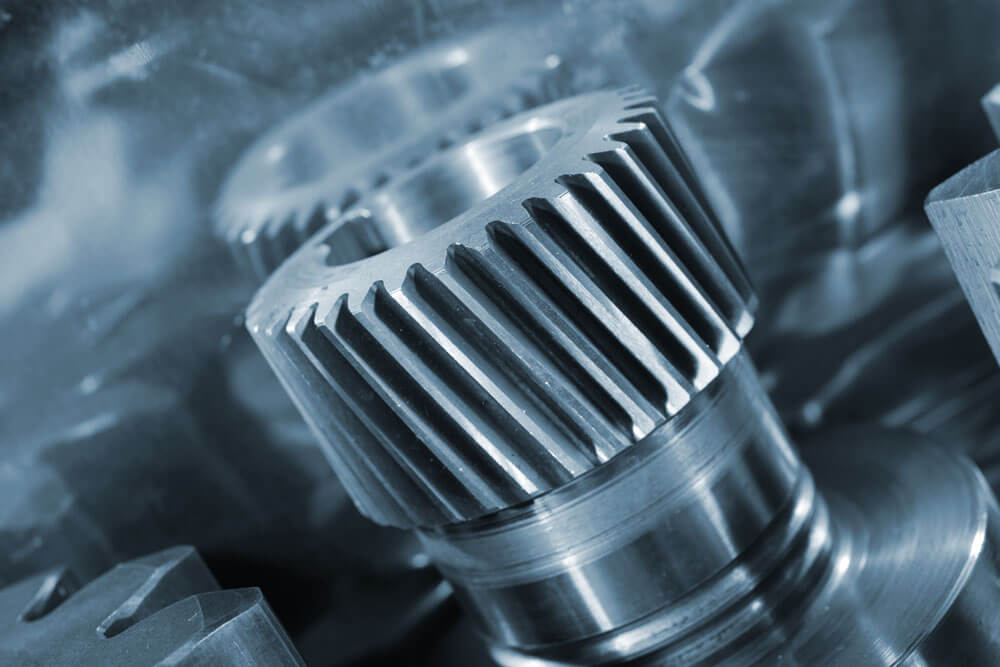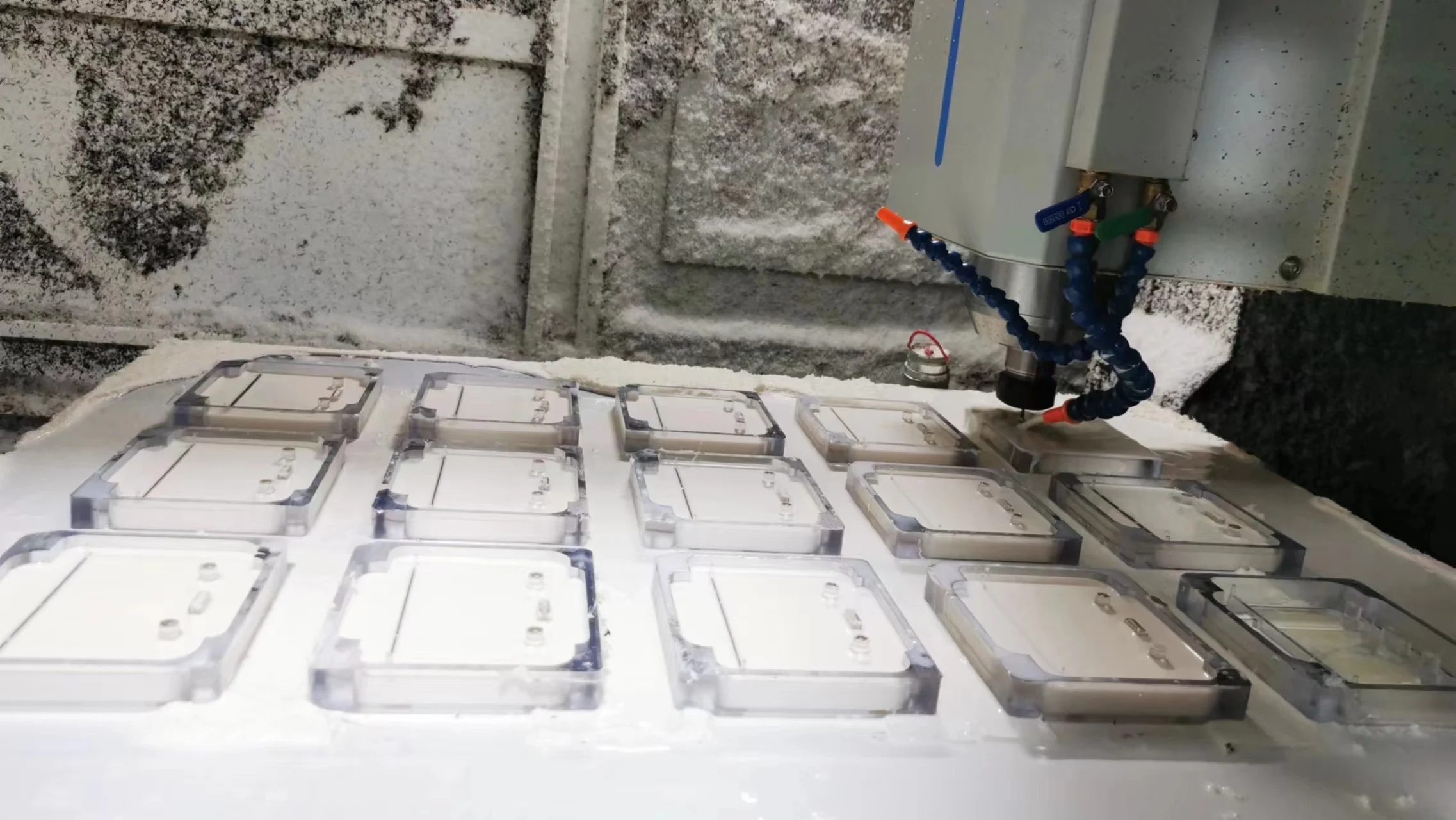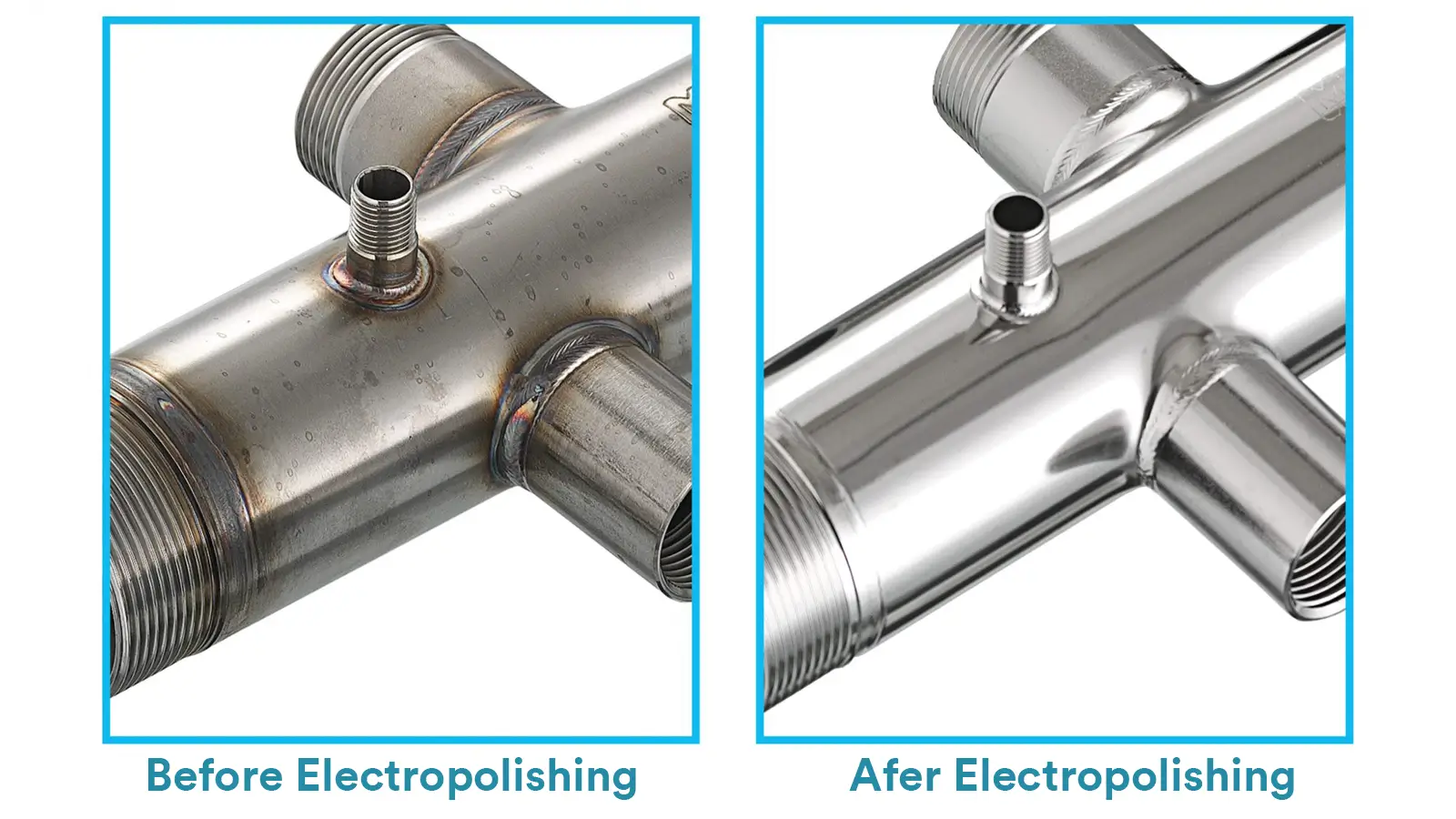Table of Contents
Custom CNC (Computer Numerical Control) machining is widely recognized as a key solution for modern industrial manufacturing challenges.
By using computer-controlled tools to translate 3D CAD models into precise, complex components, CNC machining enables manufacturers to achieve high accuracy, repeatable quality, and faster development cycles.
Industries such as aerospace, medical, automotive, and electronics rely on CNC technology to produce intricate parts efficiently, reduce material waste, and adapt quickly to design changes—benefits that traditional manufacturing methods often struggle to provide.
Why Custom CNC Machining Solves Common Industrial Manufacturing Challenges?
Custom CNC (Computer Numerical Control) machining is a crucial solution in industrial manufacturing because it directly addresses several common challenges that traditional or standardized methods struggle with.
Its primary advantages center on precision, complexity, consistency, and flexibility.
1.Core Benefits
- High Precision and Consistency: CNC machines follow exact digital instructions, virtually eliminating human error. This ensures tight tolerances and repeatable quality across all production volumes, significantly reducing defects, scrap, and rework.
- Complex Geometries: Utilizing multi-axis capabilities, CNC can produce intricate, complex features and custom shapes that are often impossible or too costly for traditional methods, enhancing design freedom.
- Rapid Development: It facilitates fast prototyping and quick design modifications, drastically accelerating product development cycles and reducing time-to-market.
- Cost Efficiency:CNC optimizes toolpaths to minimize waste and reduce material costs, improving overall production efficiency.The flexible setup also makes it economical for both low-volume custom parts and scaled production.
- Scalability:A single validated CNC program can scale from prototype to full production while ensuring consistent part quality.
2.Challenges Solved
Custom CNC is essential for industries like aerospace and medical, which demand:
- Strict Tolerance Requirements.
- Shortened Development Cycles with frequent design changes.
- Economical Production of high-mix, low-to-mid-volume parts without expensive dedicated tooling.
Choosing a partner with expertise in your material and quality standards is key to leveraging the full potential of custom CNC machining.
-Cost and Time Advantages of CNC Machining
The choice between custom CNC machining and traditional methods hinges on the balance between upfront cost, part complexity, and required volume; CNC excels by delivering high precision and speed for prototyping and complex small-to-medium batch production, while traditional methods suit simple, very high-volume runs.
1.Cost & Time Advantages
- Setup and Programming: CNC has a higher initial investment (CAM software, skilled labor) but achieves lower unit costs as batch size increases due to automation. Traditional methods have lower startup costs but higher per-part labor expenses in large runs.
- Part Complexity: CNC dramatically reduces costly rework and tooling changes for complex geometries and tight tolerances, making the total cost per part advantageous compared to manual machining.
- Prototyping Speed: By eliminating the need to redesign hardware tooling, CNC allows rapid software-driven design iterations, speeding up product validation and market entry.
- Batch Flexibility: Automated CNC workflows support quick setup changes for small-to-medium batches, maintaining consistent quality across diverse product runs.
2.Quality and Precision Implications
- Tolerance Control: CNC provides tight, repeatable tolerances and high-quality surface finishes, minimizing defects and part rejections.
- Waste Reduction: Optimized CNC toolpaths and precise control lead to controlled material waste, which is crucial for expensive, high-value alloys.
Use CNC for rapid prototyping, frequent changes, or complex, high-precision parts; use traditional methods or dedicated tooling (e.g., molding) only for very high-volume, simple parts.
Custom CNC Machining: From Design to Prototype
Custom CNC converts 3D CAD models into physical prototypes using CAM-generated G-code to precisely control multi-axis cutting tools.
1.Core CNC Prototyping Workflow (Design to Prototype)
| Phase | Key Focus |
|---|---|
| Design & Programming | CAD model defines part details; CAM software generates optimized toolpaths and G-code (machine instructions). |
| Machining & Production | Setup and fixturing secure the raw stock; the CNC machine removes material (subtractive process) to form the final geometry. |
| Quality Control | In-process verification ensures dimensional accuracy; followed by final inspection and functional testing. |
| Finishing & Iteration | Final surface finishing (deburring, coating); quick CAD/CAM updates enable rapid design-build-test cycles. |
2.Advantages of Using the CNC Workflow
- Speed & Adaptability: CNC enables fast digital-to-physical translation, allowing quick design iterations and validation.
- Precision & Complexity: Guarantees tight tolerances and repeatability; multi-axis capability allows complex, functional geometries.
- Quality Assurance: Programmable checks provide traceability and ensure prototypes closely resemble production quality.
3.Key Project Planning Considerations
- Design Principles: Define materials, tolerances, and surface finishes early to ensure machinability and cost efficiency.
- Budget: Balance the cost of setup and programming against the needs for speed and prototype fidelity.
-How CNC Machining Solves Common Industry Challenges?
CNC machining addresses common industry challenges by delivering precision, repeatability, rapid prototyping, and scalable production across sectors like medical, aerospace, and automotive EVs.
Below are concise case-study-inspired insights aligned with the user’s topics.
1.Medical devices
Shorten prototype cycles through rapid iteration, material flexibility, and tight tolerances.
- Shorter cycles: CNC enables quick translation from CAD to physical prototypes, enabling iterative testing of form, fit, and function.
- Material options: biocompatible metals and polymers can be machined to complex geometries, facilitating early design validation and sterilization-readiness.
- Risk reduction: precise tolerances improve device performance predictability, reducing late-stage redesigns.
2.Aerospace
High-precision, complex components with demanding tolerances and materials.
- Complex geometries: multi-axis CNC (including 5-axis) allows intricate features in a single setup, improving accuracy and surface finish.
- Repeatability and traceability: tight process controls and documentation support regulatory compliance and lot-to-lot consistency.
- Lightweighting support: advanced alloys (e.g., aluminum, titanium) are machined to optimize weight without compromising strength.
3.Automotive and EVs
Lightweighting, thermal management, and rapid iteration.
- Weight reduction: CNC enables precise removal of material to achieve lighter components with maintained strength, boosting range and efficiency.
- Thermal and structural integration: complex housings, brackets, and heat exchangers can be machined with tight tolerances to improve assembly accuracy.
- Rapid iteration: design changes propagate quickly from CAD to machined parts, accelerating testing of new geometries and integration with subsystems.
4.Practical outcomes you can expect from CNC adoption
- Faster development cycles and shorter time-to-market for devices, vehicles, and aerospace parts.
- Higher dimensional accuracy and repeatability across production runs, with robust quality documentation.
- Flexibility to switch between prototypes and low-to-mid-volume production without major retooling.
Key Benefits of Custom CNC Machining for Industries
Custom CNC machining provides industries with unmatched precision and repeatability to produce complex, tightly toleranced parts quickly and cost-effectively, essential for sectors like aerospace and medical.
1.Core Benefits of Custom CNC Machining
- Precision & Repeatability: Computer-controlled tooling ensures tight tolerances and consistent part quality, significantly reducing rework and guaranteeing accurate assembly fit.
- Design Freedom: Multi-axis capabilities allow for complex, intricate, and customized geometries that are often difficult or costly using other manufacturing methods.
- Accelerated Production: Automation and optimized programming reduce lead times, accelerating prototype completion and production readiness.
- Material Efficiency: Optimized toolpaths minimize scrap and waste, which is particularly cost-effective when working with high-value materials.
- Flexibility & Traceability: Quick digital changeovers support high-mix, low-volume runs and frequent iterations, while in-process checks provide essential quality data and compliance traceability.
2.Industry Advantages & Considerations
| Category | Key Takeaway |
|---|---|
| Industry Ready | Meets the demanding tolerance and material performance needs of Aerospace, Medical, and Robotics with reliable consistency. |
| Adoption Tip | Select partners with proven capability in your target tolerances and materials and ensure clear process documentation for repeatability. |
| Cost Dynamics | Initial setup costs are offset by the process’s speed, reduced labor needs, and high first-pass yield (low defects), especially as volume increases. |
Industrial Applications of Custom CNC Machining
Custom CNC machining is indispensable across critical industries, including Aerospace, Medical, and Automotive, where it provides the precision, tight tolerances, and customized complex components necessary for safety, performance, and rapid product innovation.
1.Key Industrial Applications
| Industry | Primary Components | Core Requirements |
|---|---|---|
| Aerospace & Defense | Engine components, landing gear, structural brackets. | Micron-level tolerances, high surface finish, use of titanium/superalloys for extreme environments. |
| Medical & Dental | Surgical instruments, implants (screws, plates), device housings. | Biocompatible finishes, high surface quality, and strict dimensional accuracy. |
| Automotive & EVs | Transmission housings, brake components, prototype parts. | Tight tolerances, complex geometries for lightweighting, and rapid design iteration. |
| Electronics | Housings, heat sinks, connectors, micro-scale features. | Focus on precise pockets and clean, repeatable finishes for consumer products. |
| Energy & Industrial | Valves, seals, turbine components, and pump parts. | Capability to produce complex internal channels with resistance to demanding operating conditions. |
| Tooling & Prototyping | Fixtures, molds, dies, and iterative prototypes. | Advantageous for fast turnarounds and cost-effective customization in new product development. |
2.Common Processes
CNC primarily uses milling and turning for metals (aluminum, stainless steel, titanium) and hard plastics, alongside Swiss turning for small, high-precision parts and EDM for hard metals and intricate cavities.
Common Questions About the Benefits of Custom CNC Machining for Industries
1. What is custom CNC machining and how does it work?
Custom CNC machining uses computer-controlled machines to precisely cut, drill, or mill materials from 3D CAD designs, allowing high accuracy, repeatability, and complex geometries.
2.How does CNC machining differ from traditional manufacturing methods?
CNC provides automated precision and consistent quality, reducing human error and enabling fast iterations and complex designs compared to manual machining or stamping.
3.Which industries benefit most from custom CNC machining?
Industries requiring tight tolerances and complex parts—such as aerospace, medical, automotive, EVs, and electronics—gain the most from CNC machining.
4.Can CNC machining be used for rapid prototyping?
Yes. CNC enables fast translation from CAD to physical parts, allowing quick design iterations and early testing, shortening product development cycles.
5.How does CNC machining reduce material waste and improve efficiency?
Optimized toolpaths and precise control minimize scrap, reduce rework, and save material, especially important for high-value metals.
6.What types of parts are best suited for CNC machining?
High-precision, complex components like medical implants, aerospace brackets, automotive housings, and specialized tooling are ideal candidates.
Conclusion
Custom CNC machining delivers measurable advantages for industrial manufacturing: precision, consistency, and design flexibility.
It allows rapid prototyping, supports low- to mid-volume production, and handles complex geometries with reduced risk of defects.
By leveraging expert CNC partners, companies can optimize material usage, accelerate time-to-market, and maintain strict quality standards.
As manufacturing demands evolve, CNC machining continues to provide an essential, scalable solution for producing high-quality components across diverse industries.

Lucas is a technical writer at ECOREPRAP. He has eight years of CNC programming and operating experience, including five-axis programming. He’s a lifelong learner who loves sharing his expertise.
Other Articles You Might Enjoy

What is 5-axis Machining? A Complete Guide.
5-Axis CNC machining is a manufacturing process that uses computer numerical control systems to operate 5-axis CNC machines capable of moving a cutting tool or a workpiece along five distinct axes simultaneously.

Which Country is Best for CNC Machining?
China is the best country for CNC machining service considering cost, precision, logistic and other factors. Statistical data suggests that China emerges as the premier destination for CNC machining.

Top 5 Prototype Manufacturing China
Selecting the right prototype manufacturing supplier in China is a critical decision that can significantly impact the success of your product development project.

CNC Machining Tolerances Guide
Machining tolerances stand for the precision of manufacturing processes and products. The lower the values of machining tolerances are, the higher the accuracy level would be.




